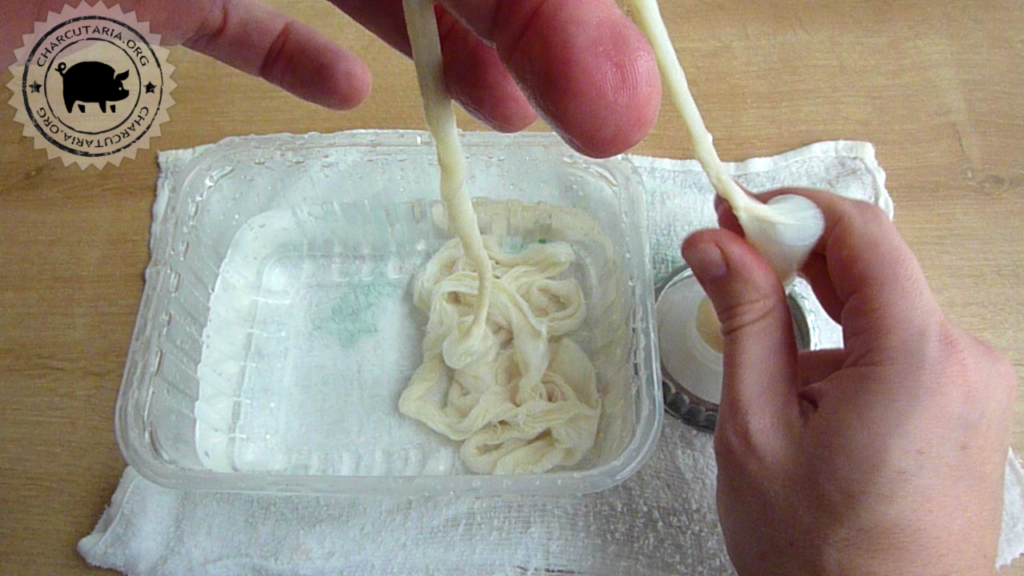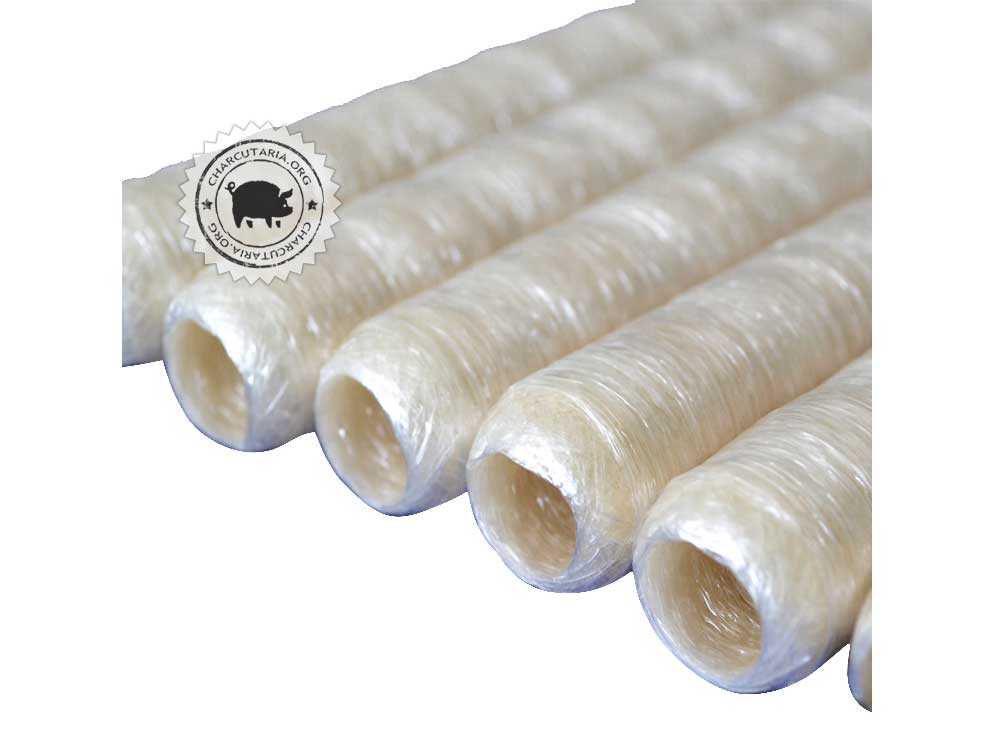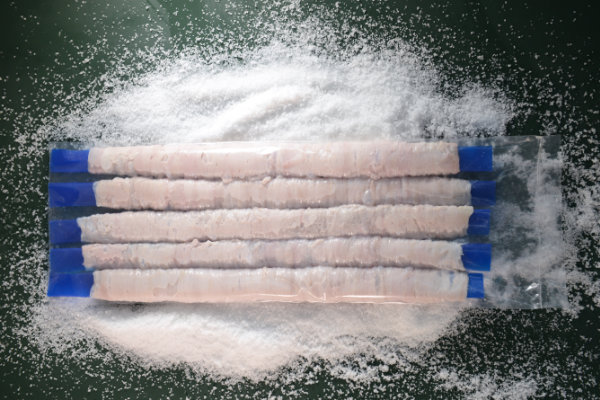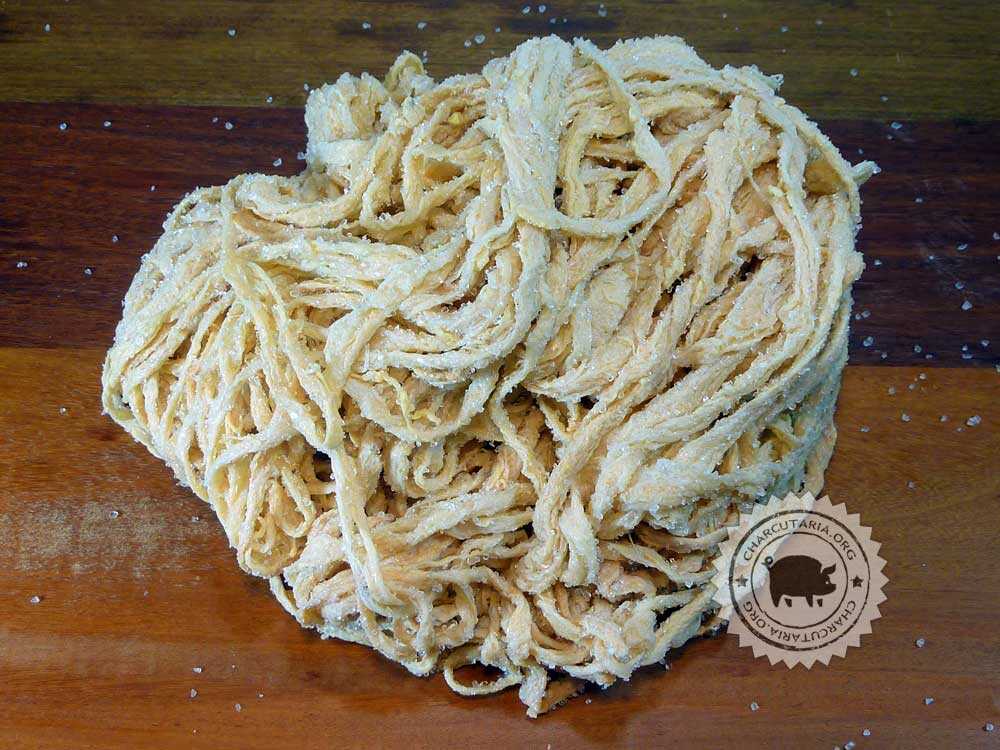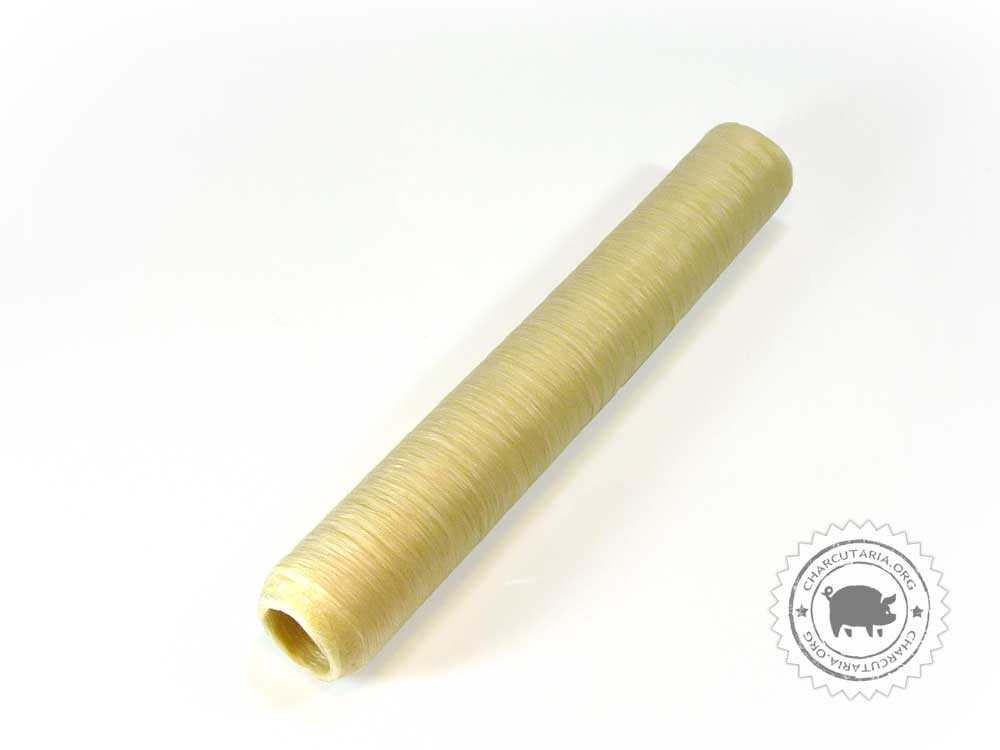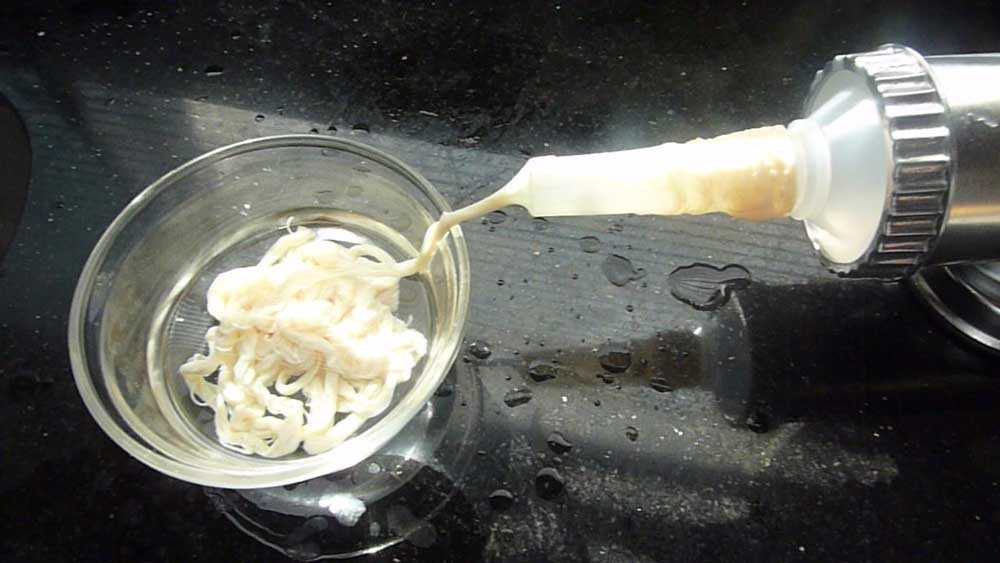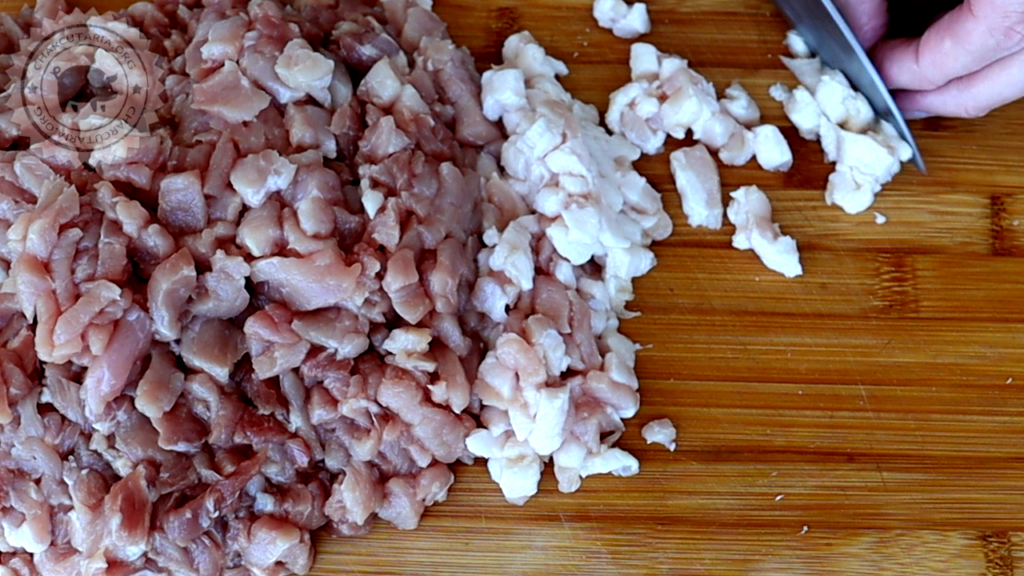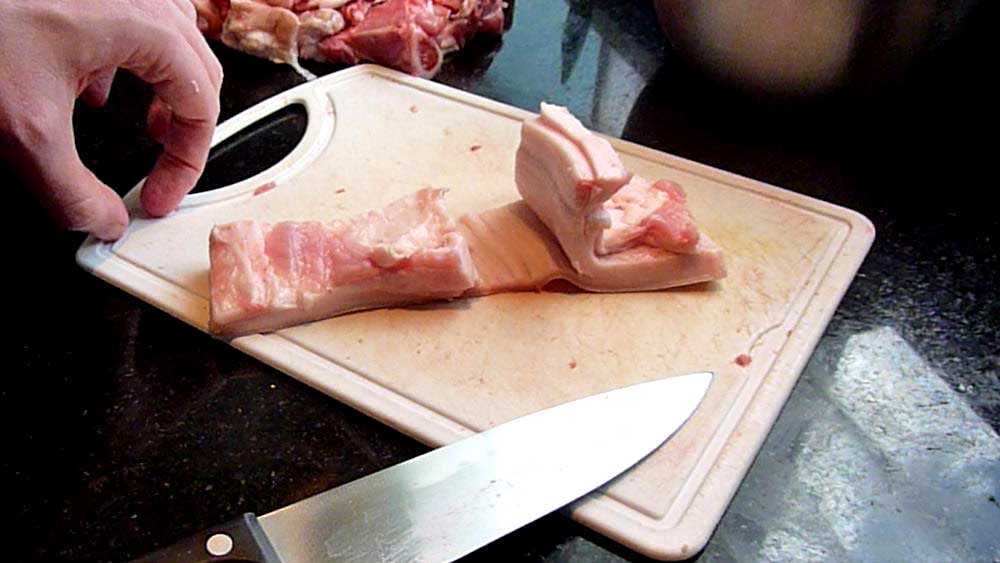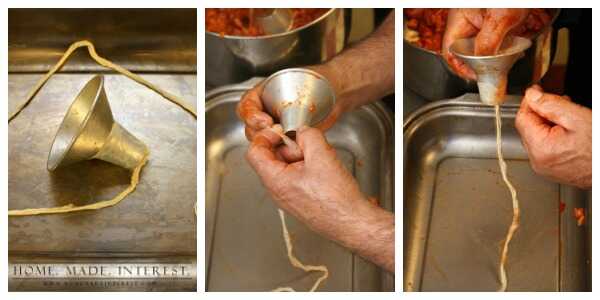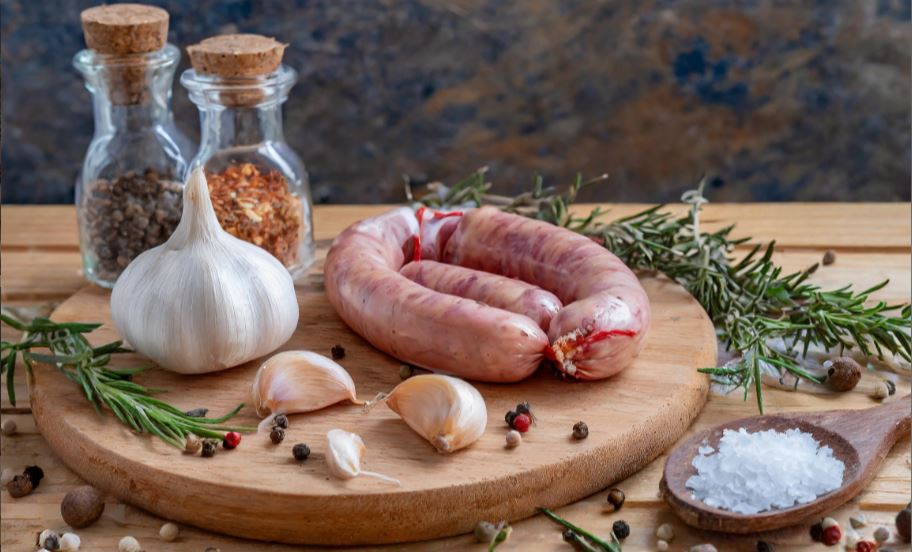
Aprenda a fazer linguiças em casa utilizando os equipamentos e procedimentos corretos para obter um resultado muito superior às linguiças oferecidas pelos frigoríficos, que frequentemente utilizam retalhos de carnes, água adicionada para ganho de peso, aditivos em excesso e gordura em excesso. Com regras simples conseguirá fazer a melhor linguiça que já comeu na vida.
Qual carne posso usar para fazer linguiça em casa?
Para fazer linguiças tipo churrasco, o ideal são cortes de carne que tenham uma boa combinação de proteína e gordura. As linguiças de churrasco são feitas geralmente com carne suína, mas experimente combinações com carne bovina, carnes de aves e cordeiro. Aqui estão algumas opções de carne que funcionam bem para fazer linguiças de churrasco.
- Pernil de porco: o pernil é a escolha mais popular para linguiças de churrasco. Ele oferece uma boa quantidade de gordura, o que ajuda a manter a suculência durante o cozimento.
- Lombo de porco: o lombo suíno é uma carne magra, mas ainda assim pode ser utilizado para linguiças de churrasco, especialmente para um consumo reduzido de gordura.
- Costela de porco: a costela suína é uma carne muito saborosa e proporciona uma boa proporção de carne e gordura.
- Fiié suíno: assim como o filé mignon bovino, o filé suíno é uma carne bem magra e macia, que mesmo sem tanta gordura ainda mantém um bom grau de suculência, pode mesclar com outros cortes mais gordurosos para obter uma linguiça balanceada e saborosa.
- Carne bovina: se você preferir uma linguiça de churrasco com carne bovina, escolha cortes bem marmorizados, como contrafilé, alcatra ou peito. A adição de gordura suína pode ajudar a equilibrar a magreza da carne bovina. Linguiças mistas com arne bovina e suína também são boas opções para equilibrar os sabores.
- Frango ou peru: para uma opção mais leve, opte por usar carne de frango ou peru. No entanto, certifique-se de adicionar gordura (como bacon) para evitar que as linguiças fiquem muito secas durante o cozimento.
- Cordeiro: a paleta de cordeiro é uma opção interessante e diferenciada. É uma carne com sabor mais marcante que será uma diferencial no seu churrasco. Temperar com um pouco de hortelã é bastante comum para realçar ainda mais o sabor especial da carne de cordeiro.
Ao escolher a carne, lembre-se de equilibrar a proporção de carne magra com gordura para obter uma textura suculenta. O sabor final também será influenciado pelos temperos e especiarias que você escolher para a mistura.
Equipamentos para fazer linguiça
- Faca bem afiada ou moedor de carne(disco com furos largos, de 10mm ou maior);
- Tripa natural suína, ovina ou tripa de colágeno;
- Enchedor de linguiça, que pode ser um funil comum largo ou um equipamento específico;
- Balança, ideal que meça até as miligramas;
Moer ou cortar com uma faca?
Moedores de carne caseiros tem a rosca muito pequena, que podem esmagar a carne deixando uma textura estranha, quebradiça. Discos de moedor com furos muito pequenos também estragam a textura da linguiça. A carne não pode ser moída muito fina ou esmagada, ela tem que ter pedaços inteiros. Apenas moedores de grande porte fazem bem esse trabalho bem feito. Moedores caseiros geralmente não servem para fazer uma boa linguiça. Para grandes quantidades cortar com uma faca é inviável, mas para produtos caseiros é recomendável utilizar uma boa faca afiada e cortar a carne em pedaços pequenos, de um a meio cm.
Tripa natural ou de colágeno?
A tripa natural tem melhor “mordida”, ou seja, é mais macia e fácil de engolir, mas em contrapartida é mais difícil de trabalhar, pois é mole, estoura mais facilmente e é preciso dessalgá-la antes de usar. A tripa de colágeno tem digestão mais difícil e é mais rígida na hora de morder e cortar, em contrapartida é mais fácil de trabalhar pois vem pronta para usar e não é preciso dessalgar. Particularmente prefiro a tripa natural, pois para produtos caseiros o que vale é a qualidade e não a produtividade. Não use tripas de celulose, sintéticas ou fibrosas pois não são comestíveis.
Temperos para fazer linguiça
Sal
A quantidade de sal varia muito do gosto individual, mas na regra utilize entre 5 g e 10 g de sal para cada 500 gramas de carne e gordura, ou seja, entre 1% e 2% do peso da linguiça de sal. Essa quantidade vai variar de acordo com a preferência, mas é recomendável iniciar o processo dentro dessa medida para evitar excessos.
Temperos
Utilize preferencialmente temperos frescos, mas também obterá um bom resultado utilizando temperos secos, como alho em flocos, cebola desidratada, pimentas, orégano, gengibre em pó, louro em pó… ervas e especiarias secas, como orégano, manjericão, tomilho e etc devem ser esmagadas pouco antes da utilização para liberarem sabor. Ervas secas e temperos frescos podem conter contaminantes, então escolha bons fornecedores para evitar a contaminação do produto proveniente das ervas aromáticas.
No tempero reside toda a diversão do processo, pois é aqui que poderá utilizar sua criatividade para elaborar receitas únicas que darão personalidade à base de sua linguiça, que é a carne. A escolha da carne e dos temperos é a alma desta saborosa arte da charcutaria que é a produção de linguiças. Qual seria a graça de fazer uma linguiça igual ou parecida com a do supermercado?
Temperos que são aditivos naturais funcionais
- Alho – bactericida e fungicida natural
- Cebola – bactericida e fungicida natural
- Alecrim – antioxidante natural, ideal utilizar extrato de alecrim ou óleo de alecrim
- Aipo – é uma fonte natural de nitrito de sódio(aditivo do sal de cura)
- Beterraba – fonte de nitrito de sódio e corante natural
- Limão – conservante acidulante natural
Aditivos usados nas linguiças comerciais
- Sal de cura: usar ou não usar, leia as publicações: Dicas para fazer linguiça caseira e Sal de cura o que é e quanto usar
- Acelerador de cura: caso opte pelo uso do sal de cura é recomendável também usar algum acelerador, que pode ser o ácido ascórbico ou o eritorbato de sódio. Como alternativa natual é possível utilizar a cereja em pó como fonte de ácido ascórbico
- Antioxidantes: extrato de alecrim é um ótimo agente antioxidante totalmente natural
- Ligadores: para ajudar na ligação/bind, que é o potencial do produto em reter umidade e gordura, utilize proteínas vegetais, como soja, e/ou leite em pó. Além disso trabalhar a carne depois de cortada também ajuda a proteína na retenção de líquidos
- Para mais informações leia o post Aditivos para embutidos
Sal de cura, usar ou não usar?
O sal de cura vai deixar a linguiça, depois de assada, com aquele tom rosado típico de produtos curados. Sem o sal de cura a linguiça, depois de assada, ficará com um tom cinza. Além disso o sal de cura vai dar o sabor específico, ajudar na prevenção do ranço e dar mais durabilidade por ter função conservante. Mas, apesar de ser um componente naturalmente encontrado em diversos legumes, há muita controvérsia sobre possíveis ligações com a incidência de câncer. Comercialmente é obrigatório seu uso, mas para produtos caseiros não há obrigação, então cabe a você decidir usar ou não. Para saber mais sobre o sal de cura, leia o post Sal de cura o que é e quanto usar.
Procedimentos para fazer linguiça em casa
Corte a carne em cubos, geralmente de 1cm de espessura ou de um tamanho adequado ao tamanho do bocal de entrada do moedor de carne utilizado. É possível “moer” a carne com uma faca bem afiada, mas o processo será bem mais demorado. Se tiver um moedor muito bom, com rosca larga e boca com furo de meia polegada, use-o pois o resultado provavelmente será muito satisfatório. Caso tenha um moedor de pequeno porte dê preferência para o uso da faca. Moedores pequenos podem estragar a textura da carne.
Antes de moer, é recomendável temperar a carne em cubos, com o sal, a pimenta, as ervas e especiarias que irá utilizar para dar sabor à linguiça. Deixe algumas horas na geladeira para que todos os temperos, principalmente o sal, sejam bem absorvidos e distribuídos uniformemente pela carne. Caso corte com a faca, tempere após cortar.
Mantenha sempre tudo gelado
É importante manter a carne o mais frio possível durante todo o processo de produção de linguiças, pois se a carne esquentar muito durante a produção a gordura irá separar. E quanto menos a gordura se soltar, melhor, pois o produto final será uma linguiça mais suculenta. Pode-se deixar num temperatura próxima do congelamento para depois proceder com a moagem ou corte.
Ao cortar a carne, remova o máximo de nervos, pois estes podem ficar presos nos discos durante a moagem e alterar a textura da carne.
Que gordura usar para fazer linguiça?
Tanto para linguiças quanto para qualquer embutido o ideal é usar a gordura rígida, como a subcutânea. Nos suínos essa gordura é abundante na barriga, que é muito utilizada para fazer o bacon. Ao comprar uma peça de pernil, por exemplo, a gordura rígida estará entre a pele/couro e a carne. Remova cuidadosamente a pele, corte a gordura em cubos e guarde-a no congelador. O ideal é incluir essa gordura bem no final do processo, pouco antes de embutir, pois quanto mais gelada menor será a chance de derreter durante a produção.
Misture bem
Após executada a moagem, misture vigorosamente a carne para que a proteína seja bem trabalhada, pode-se adicionar algum líquido bem gelado nesta etapa, como vinho, suco ou até mesmo gelo, só não esqueça de que é importante que tudo fique bem incorporado na mistura. Adicionar líquidos aumenta a umidade do produto final.
O importante é não deixar a carne quebradiça, é preciso obter uma mistura bem homogênea, pegajosa, pois desta forma a linguiça ficará com uma consistência mais firme. Pode-se misturar com a mão ou com uma batedeira com o batedor de pá plana ou gancho, veja qual se adapta melhor com seu equipamento. O importante é misturar bem até que a mistura fique pegajosa.
Enchendo a tripa
Tripas naturais são salgadas e precisam ser enxaguadas por dentro e por fora e ficar de molho em água por, pelo menos, 30 minutos.
Caso não tenha equipamento específico para embutir, não há problema, use um funil com a boca e o duto largos e os dedos ou o cabo de uma colher de pau para empurrar a carne do funil para a tripa.
Caso tenha uma ensacadeira/canhão para embutir linguiça, insira toda a tripa no bico do enchedor e vá embutindo tentando evitar a formação de bolhas de ar.
Assim que toda a tripa estiver recheada, aperte e gire para dividir e prender as partes separadas. Gire alternando as direções ou amarre com um barbante.




